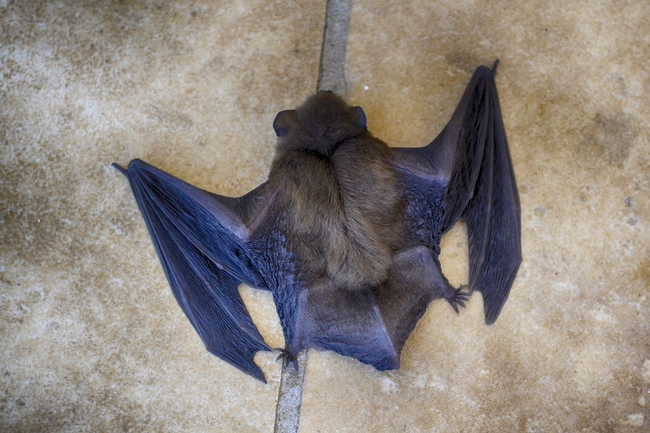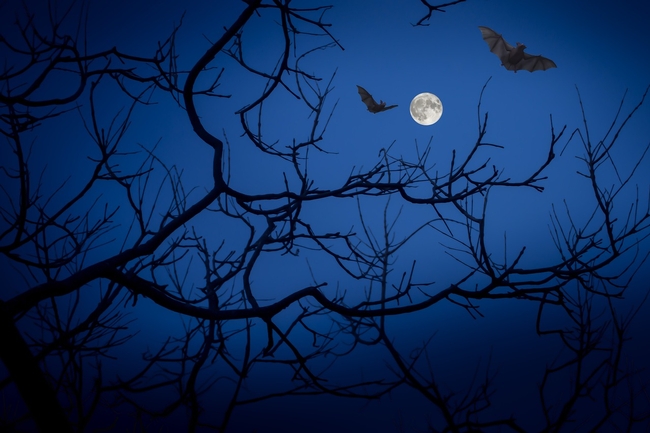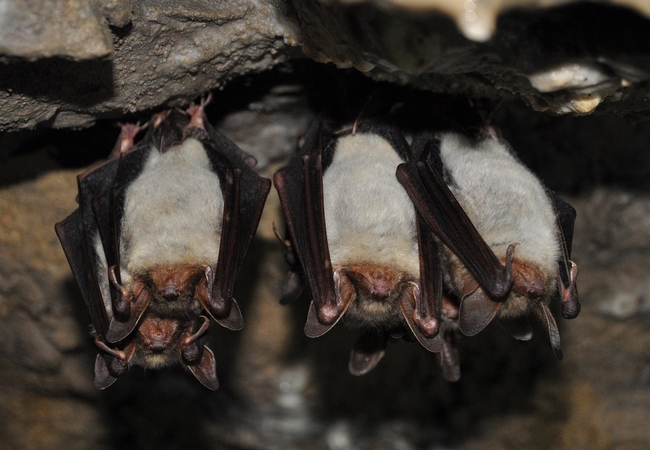Did you know that 17 different types of bats live in Northern California? Some are pollinators; others are insect eaters. Both are important to our environment. Much has been written over the last few years about the loss of pollinators. Bats are an important pollinator. We rarely see them as most types usually fly at night. The insect-eating species consume many insects every night.
There are 154 species of bats in North America and half of those are at risk, from wind machines, people and diseases like white-nose syndrome. I know many of us remember vampire bats from the movies, but Count Dracula is a fictional being. Some South American bats do lick blood from animals, and of course we would all rather avoid those.
I'd like to share a few more facts about bats.
Fact: The saliva of some vampire bats contains a natural anticoagulant that has been isolated for medicinal use. Known as Draculin, it is used to treat stroke victims and others with blood- clotting issues.
Fact: Bats have evolved over eons from small ground animals to mammals capable of flight. If you look at the wing, you can see the outline of their old front hand or paw. It is amazing to see. Because bats fly, some people assume that they are birds. But birds do not give birth to live babies, nor do they carry their babies around on their chest.
Fact: Without bats there would be no tequila. The agave plant, the basis for tequila, is pollinated by three bats native to Mexico. So without bats, no margaritas. Raise a glass to the bats!
Fact: Not all bats live in groups. Some, like the hoary bat, live on their own.
Fact: In California, bats are protected by the Department of Fish and Wildlife. It is illegal to capture or kill them without a permit.
Fact: The beautiful bats pictured in some Facebook groups are almost all Asian fruit bats. They have the face of a little fox and are not found in North America. Once, in Thailand, I saw several hundred of these bats hanging from a huge tree shading a restaurant. They didn't bother anyone, and no one bothered them.
Fact: If you have driven across the Yolo Causeway in summer, you have driven over a large nesting area for bats. It is estimated that 250,000 bats nest under the causeway. They spend their days there and their nights roaming the fields. These are migratory bats, and during the winter they either hibernate or fly to warmer climates. Summer crops are grown in the causeway, and because the land often floods, it is very fertile.
Fact: Northern California Bats is an organization that cares for bats in distress. These bats are groomed, fed and cared for until they can fly again. How do you groom a bat? With a mascara brush! NorCal Bats members also give talks about the benefits of bats and conduct walks at the site near the Yolo Causeway.
Fact: Climate change is certain to cause habitat loss that will affect bats.
Fact: Bats carry many diseases, including rabies. If you see a bat in distress, call an expert.
Fact: If you want to put up a bat house, you should install it in the spring when bats are moving to their summer grounds.
Fact: You can buy bat guano on-line. It is a highly regarded fertilizer.
Bay Nature magazine had an excellent feature on bats in the Spring 2024 issue. In the same issue, you'll find another article about Archer Taylor Preserve, right here in Napa County.
Library Talk: Join UC Master Gardeners of Napa County for a talk on “How to Improve Water Retention in our Landscapes,” on Thursday, November 7, at 7 pm via Zoom. Learn some water catchment/retention approaches that you can use in your own yard to “Slow It, Spread It and Sink It.” Register to receive the Zoom link.
Help Desk: The Master Gardener Help Desk is available to answer your garden questions on Mondays and Fridays from 10 am until 1 pm at the University of California Cooperative Extension Office, 1710 Soscol Avenue, Suite 4, Napa. Or send your questions to mastergardeners@countyofnapa.org. Include your name, address, phone number and a brief description.


